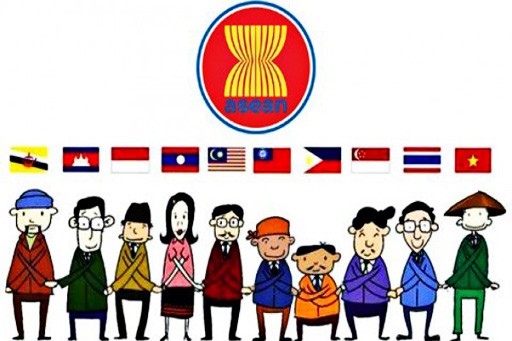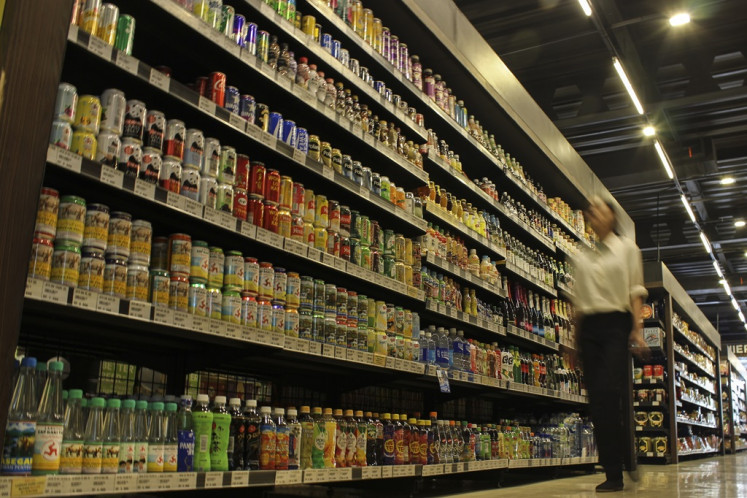Popular Reads
Top Results
Can't find what you're looking for?
View all search resultsPopular Reads
Top Results
Can't find what you're looking for?
View all search resultsASEAN at the crossroads: Reimagining the ASEAN Community
Taken together, these challenges have exposed gaps or weaknesses in the ability of ASEAN to address some its goals such as participation in global value chains, enhancement of macro-financial coordination and narrowing the development gaps.
Change text size
Gift Premium Articles
to Anyone
A
SEAN has recovered gradually from what seems to be the most severe phase of the COVID-19 pandemic crisis, but the region remains at a critical moment. New shocks have emerged and are challenging the region – the global economic slowdown, higher food and energy prices, climate disasters and continued global trade tensions. But similar to managing the pandemic, the same resilience can help counter the possible far-reaching damage of such global shocks.
The region’s policy space, built over the years of successfully navigating the previous economic crises, will ensure that both monetary and fiscal policies remain responsive and flexible to deal with the spill-overs, including implementing stronger policies to protect the poor and alleviate the impact on sectors adversely affected by the shocks.
To be sure, ASEAN’s strong commitment to regional cooperation and integration will help the region navigate through these headwinds and uncertainties. It also makes the ASEAN community resilient and strong despite the odds and challenges.
The region’s solid achievements over the last five years attest to this.
Progress has been achieved in implementing the ASEAN Comprehensive Recovery Framework as an exit strategy from the pandemic. ASEAN’s projected growth of 5.3 percent in 2022 far exceeds the global growth average of 3.2 percent. It is now crucial to build on this momentum toward an inclusive and sustainable post-pandemic recovery.
The entry into force of the Regional Comprehensive Economic Partnership (RCEP) Agreement, as well as efforts in substantially concluding the upgrade negotiations of the ASEAN-Australia-New Zealand Free Trade Area (AANZFTA), upgrading the existing ASEAN FTAs, such as that for China and India, and negotiating new ones, such that with Canada, are clear reminders that ASEAN must adhere to a rules-based multilateral trading system if the region’s economic dynamism is to be sustained.
Efforts to build back better and secure the contribution of regional integration for the peoples of ASEAN have continued to gain ground. ASEAN member states have managed to reopen schools, and new guidelines are now in place to keep them open for safe in-person education during health crises and emergencies in the long term.
Various programs and initiatives have been and are being implemented to empower youth, women and other vulnerable groups, including the ASEAN Regional Plan of Action on Women, Peace and Security (WPS) that was adopted at the recent ASEAN Summit in November. A case in point is the ASEAN Junior Fellowship Programme with the ASEAN Secretariat (AJFP), initiated by Brunei Darussalam, to harness the potential contribution of ASEAN’s young diplomats in community-building efforts.
Mechanisms are also now in place to deal with future health crises such as the ASEAN Centre for Public Health Emergencies and Emerging Diseases and the ASEAN Regional Reserve of Medical Public Health Emergencies.
Meanwhile, amid the increasing geopolitical tensions in the world, ASEAN’s commitment to peace and stability in the region has not wavered. This is underlined by ASEAN’s expansion of its external relations whereby in the past five years, ASEAN enlarged its list of partners with the additions of one dialogue partner (the United Kingdom), two sectoral dialogue partners (Brazil and the United Arab Emirates) and three development partners (Chile, France and Italy). Furthermore, since 2018, 15 new High Contracting Parties, including most recently Denmark, Greece, the Netherlands, Oman, Qatar, Ukraine and the UAE, have acceded to the Treaty of Amity and Cooperation in the Southeast Asia (TAC).
Therefore, openness and engagement remain key, as issues that challenge the security of the region are being addressed, whether in confronting radicalization and violent extremism, combating transnational crime, or making ASEAN as politically relevant as possible.
In these uncertain times, the need to walk the political talk is crucial. Thus, the decision to welcome Timor-Leste as a member is not only a test of ASEAN’s maturity as a security community, but also signifies that ASEAN centrality and ASEAN community are indeed working.
Yet, despite the achievements of the last five years, the ASEAN community continues to remain at the crossroads. This is because of the global and regional headwinds that impact the future of the ASEAN community, including problems like global trade tensions, climate change, digital divide and even the pandemic. Taken together, these challenges have exposed gaps or weaknesses in the ability of ASEAN to address some its goals such as participation in global value chains, enhancement of macro-financial coordination and narrowing the development gaps.
Given the multitude of changes that have impacted the underpinnings of the ASEAN community, the post-2025 ASEAN agenda should adopt a different approach to regional integration, namely one that is more dynamic and is capable of launching new initiatives and implementing measures in response to changing market and economic conditions.
Simply put, the post-2025 agenda for ASEAN is about re-imagining the ASEAN community by identifying and implementing the right levers of regional cooperation and integration that could position ASEAN economies well in the years to come.
For example, pursuing digital transformation is clearly an imperative for a resilient future. Current efforts to accelerate the shift to a digital and knowledge economy in the region, such as the Bandar Seri Begawan Roadmap on an ASEAN Digital Transformation Agenda and the development of an ASEAN Digital Economy Framework, which can drive productivity and prosperity in ASEAN in the coming years are vital.
But more is needed. There is a need to invest in infrastructure, education, cybersecurity and safety nets, and reforms to boost access to technology. More important, a new mindset is needed to ensure that everyone in ASEAN, from governments to individuals and businesses, fully and holistically embraces the digital transformation, and is ready for a digital era.
While the path ahead for ASEAN can likely be as tough, if not tougher, with the right choices, the region can overcome the worst outcomes. So, what should ASEAN do?
First, ASEAN must continue to remain relevant, dynamic and flexible. This means having strong institutions, processes and mechanisms to sustain the relevance of ASEAN as an important regional player. Endeavoring toward a strengthened and well-resourced ASEAN Secretariat is the right step forward, and the time to do it is now.
Second, the ASEAN community should and must work if ASEAN is to become the fifth-largest economy in the world by 2030 as projected. The opportunities are tremendous. Unfortunately, ASEAN has a narrow path to walk toward an integrated community, and there is no room for missteps. Thus, developing a comprehensive post-2025 agenda for the ASEAN community, as well as coordinated strategies among the three community pillars is crucial. The post-2025 agenda should not be seen only as a continuation of past integration efforts, but rather, as an opportunity to re-imagine ASEAN as a truly integrated community.
Finally, since its founding, ASEAN has ensured that the welfare of the peoples should be at the center of everything. ASEAN has always adapted to a changing world. Thus, the narrowing of development gaps should not only be an initiative, rather it should be an integral part of ASEAN thinking and strategy that is embedded in every country’s political, economic and social systems.
Given what the ASEAN community has accomplished over the last five years, the coming years will see the emergence of a more resilient ASEAN community, much more integrated, and better prepared to cope with shocks and uncertainties. But to achieve that, ASEAN must continue to transform and re-imagine itself.
***
The writer is ASEAN secretary-general.











